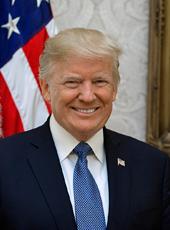
Press Release - CEA Report: Reforming Biopharmaceutical Pricing at Home and Abroad
Today, the Council of Economic Advisers (CEA) released a report on how the government can help to effectively reduce the prices of lifesaving drugs while stimulating innovation in the pharmaceutical industry. Please see below for the executive summary and read the full report here.
The affordability of healthcare and biopharmaceutical drugs is a top concern for Americans. It is often asserted that promoting innovation and affordable drugs are conflicting goals. New innovations, however, often provide improved health that was not previously available at any price or obviate the need for more costly care. They thereby lower the effective price of health down to the price of the patented drugs, and later down to the price of generic drugs. Federal policies that affect drug pricing should satisfy two goals. First, domestic drug prices paid by Americans should be reduced. Second, the price of better health in the future should also be reduced by spurring medical innovation. This report considers policy options to simultaneously advance these two seemingly conflicting goals.
Reducing drug prices that Americans pay means recognizing that many artificially high prices result from government policies that prevent, rather than foster, healthy price competition. Drug prices, for example, are sometimes artificially high due to government regulations that raise prices. This report discusses changes to the Medicare and Medicaid programs that could help lower domestic prices, as well as reforms to the Food and Drug Administration (FDA) that could encourage more robust price competition.
Preserving incentives for biopharmaceutical innovation can be achieved while still promoting lower prices for Americans. Global financial returns from product development drive innovation. But those returns are unfairly low today. This is because most foreign governments, which are the primary buyers in their respective pharmaceutical markets, force drug manufacturers to comply with pricing rules to gain market access. Through this leverage, foreign governments are able to set drug prices below those that prevail in the United States and erode the returns to innovation manufacturers might otherwise see from selling in their markets. Among members of the Organization for Economic Co-operation and Development (OECD), CEA estimates that Americans pay more than 70 percent of patented biopharmaceutical profits, despite the fact that the United States accounts for only 34 percent of OECD GDP at Purchasing Power Parity (PPP). In short, pharmaceutical innovators—and foreign governments—across the world rely on America's patients and taxpayers to finance critical research and development.
The objective of government in biopharmaceutical policy is to ensure that the private sector competes and invests in meaningful innovations that lower the price of health, rather than incentivizing market exclusivity and high prices on products. The two goals of reducing American prices and stimulating innovation are consistent, but can be achieved through a combined strategy that corrects government policies that hinder price-competition at home, while at the same time limiting free-riding abroad.
Donald J. Trump (1st Term), Press Release - CEA Report: Reforming Biopharmaceutical Pricing at Home and Abroad Online by Gerhard Peters and John T. Woolley, The American Presidency Project https://www.presidency.ucsb.edu/node/332300
